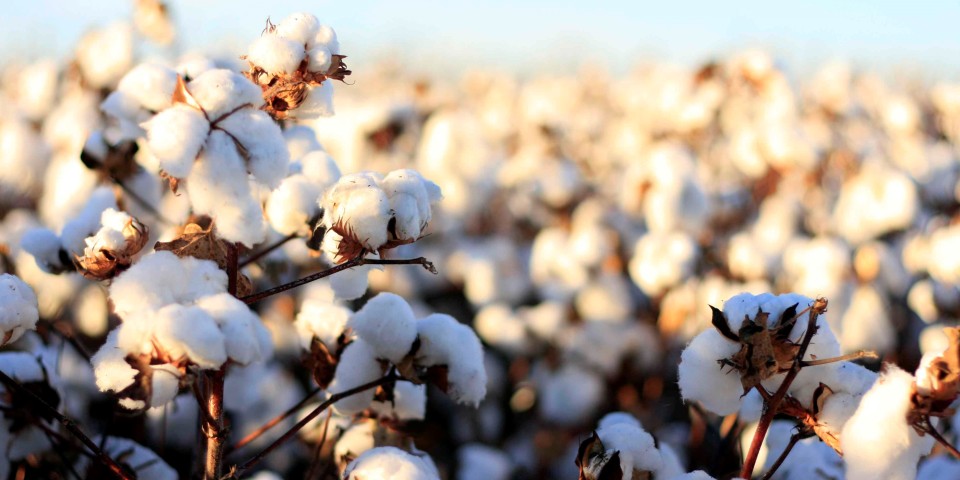 Moving the fashion and homewares industry towards a more sustainable future means reconsidering the materials used and ensuring they are both socially and environmentally kind, writes Flora Davidson, Supplycompass
Moving the fashion and homewares industry towards a more sustainable future means reconsidering the materials used and ensuring they are both socially and environmentally kind, writes Flora Davidson, Supplycompass
To assess the sustainability of a fabric, you need to consider its social and environmental impact in four main areas:
1. The extraction of the raw material.
2. Textile production.
3. Dyeing, printing, washing and finishing colour fix.
4. End of life, biodegradability and ability to be recycled.
Here are five fabrics that will help to make fashion and homewares brands more sustainable now and in the future:
1. Organic cotton
People have been spinning the cotton plant into thread, clothing and other textiles for millennia but much of the world’s cotton is now Bt [genetically modified cotton]. Organic cotton is a better for people and the environment than its non-organic counterpart.
No pesticides are used in the production of organic cotton, which is important as not only are pesticides bad for soil and the environment, but they are extremely harmful to the health of those working with them. They can be deadly and cause a multitude of chronic illnesses.
Organic cotton replenishes and maintains soil fertility rather than depleting it. Crop rotation is required with organic farming, which helps lock in C02 and build stronger soil. Organic farming techniques use less water because crops are predominantly rain fed and the increased organic matter in the soil means it holds water better.
Fairtrade organic cotton means farmers can command a higher price and be certain of a more stable income. Organic cotton is grown using natural, untreated, GMO-free seeds which means farmers don’t need to rely on expensive chemicals and risk spiralling into dept.
2. Econyl
As the world grows steadily more environmentally conscious, more and more brands are beginning to experiment with using the latest generation of recycled fabrics to meet public demand for sustainable options.
One of these new materials rapidly gaining in popularity, especially in the swimwear industry, is Econyl. Econyl is a form of nylon that is made entirely from waste products. It is made from a range of post-consumer waste including abandoned fishing nets, carpets and rigid textiles and aims to be a green alternative to the original product which is made from a derivative of oil.
To make Econyl; waste products, such as reclaimed fishing nets, are first taken to pretreatment facilities where they are sorted and shredded into pieces small enough to be put through the Econyl process. The shredded material is then moved to a regeneration plant where it is put into huge chemical reactors that, through a process of de- and re-polymerisation break down the components of the material and re-generate the polyamide 6. The final product is then processed into yarn.
Econyl has great eco-friendly credentials. Firstly the use of abandoned fishing nets is helping to clean up the seas; entanglement in abandoned nets causes the death of many thousands of whales, dolphins and other sea life every year. For every 10,000 tonnes of raw materials recycled into Econyl 70,000 barrels of crude oil are saved, and 57,000 tonnes of CO2 emissions are avoided compared to traditional production methods. Econyl fabrics can be recycled infinitely without losing quality, supporting the vision of a more circular fashion industry.
3. Tencel
Tencel is the registered brand name of a revolutionary sustainable fibre of botanical origin, produced by the Lenzing Group. Based in Austria, the Lenzing company was founded in 1938 and has built an impressive worldwide reputation among aficionados of ethical fashion by focusing on the manufacture and development of highly sustainable fabrics.
The fibre, also known by the generic name lyocell, is a variety of rayon. It is made entirely from regenerated cellulose, and as such it is exceptionally environmentally friendly. The source material used in the manufacturing process is dissolved wood pulp, which makes it one of the most sustainable options available to the ethically minded clothing manufacturer.
Hailed by many as a modern wonder material, lyocell was first synthesised in 1972 at Enka, North Carolina, under the working title of ‘Newcell’. Having captured the imaginations of forward-thinking innovators within the clothing industry, the fabric was further refined at the Courtaulds factory in Coventry, England during the 1980s, and it was there that the name ‘Tencel’ was first used.
The first stage in the manufacturing process is the sourcing of suitable wood pulp. The major factor which sets this material apart from other forms of rayon is the choice of raw materials, which are specifically chosen for their eco-friendliness. All the wood pulp used in its manufacture is harvested from eucalyptus trees, which have been specifically farmed for the purpose, on land which would otherwise not be used as it is unsuitable for agricultural development.
Unlike many other man-made materials, the farming process scores highly in terms of environmental sustainability. No existing forests are depleted, no pesticides are used, and absolutely no genetic manipulation is involved in the process of farming the raw materials.
This offers a significant advantage over many other synthetic fibres, which generally require extensive chemical processing. The synthesis of most other forms of rayon involves the use of chemical catalysts such as cobalt and manganese. Both of these can be highly toxic to the environment, resulting in high levels of air and water pollution which can have a potentially catastrophic effect upon the ecosystem.
A life cycle assessment conducted in 2008 by the University of Leipzig reported that the production of lyocell is far more eco-friendly than the harvesting of cotton. The study found that the manufacturing process consumes ten to twenty times less water than would be used in the production of an equivalent amount of cotton.

